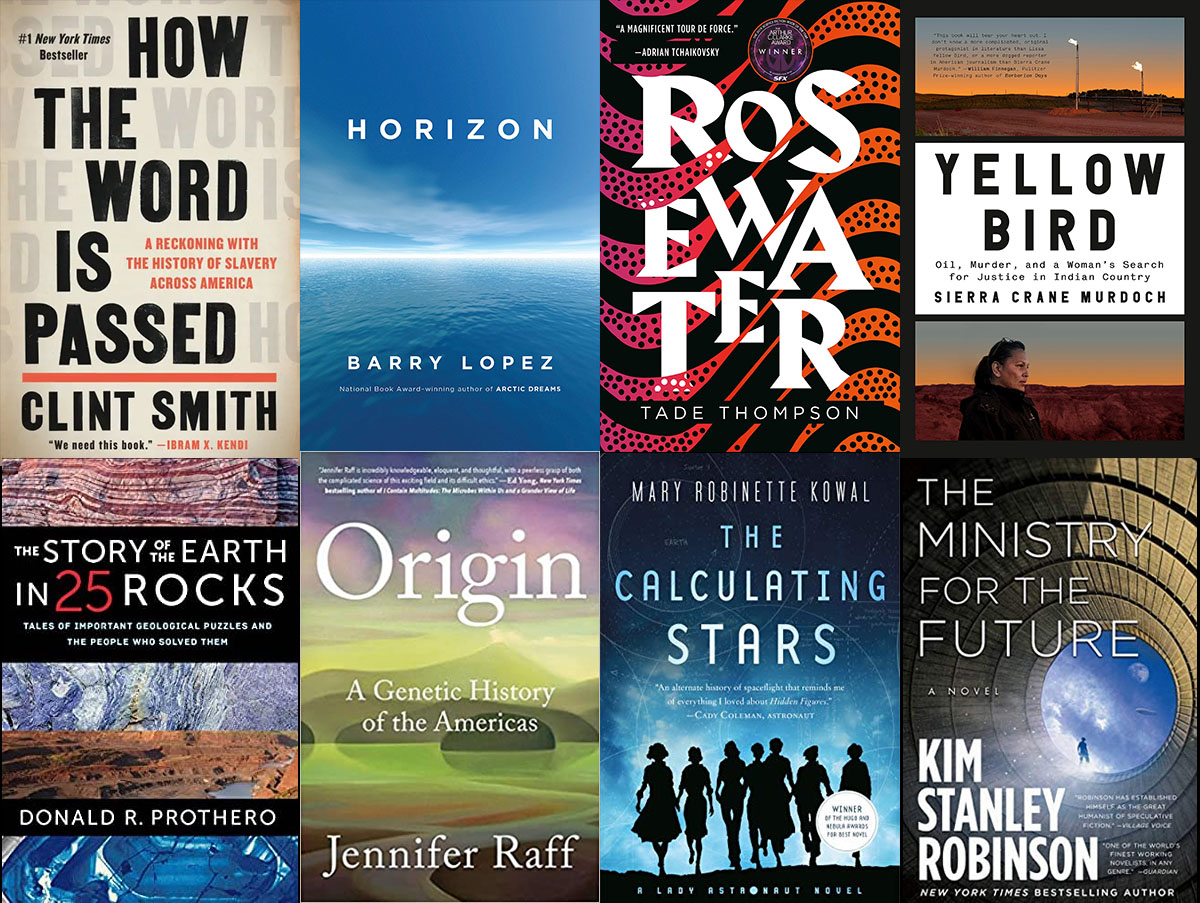How the Word Is Passed: A Reckoning with the History of Slavery Across America, by Clint Smith
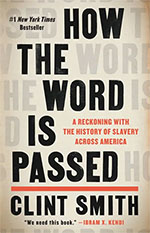 A really outstanding book. Clint Smith, a Black poet and academic, visits seven places that have important ties to the history of American slavery. Many of these places are focused on tourism and education, with a goal of spreading understanding about how slavery functioned in this country. One of them is on the mountain next to where I teach: Monticello, Thomas Jefferson’s home and plantation. Visiting it, Smith talks to other visitors and to the tour guides who lead them through the place, lead them in thinking about race, power dynamics, economics, and the personalities involved. Smith’s writing is superb, and I have rarely read anything so evocative and essential. This would be my top reading recommendation to any American. Slavery is America’s original sin, and the racism is has baked into our society still harms today. But while Smith could have stopped there, he goes deeper into a question that not enough people consider: what is the right way to teach about slavery in America? How do public-facing institutions like Monticello grapple with the presentation of ideas and perspectives to a public which is quite diverse in its interest and acceptance of the reality of American injustice. A fascinating and well-reported read.
A really outstanding book. Clint Smith, a Black poet and academic, visits seven places that have important ties to the history of American slavery. Many of these places are focused on tourism and education, with a goal of spreading understanding about how slavery functioned in this country. One of them is on the mountain next to where I teach: Monticello, Thomas Jefferson’s home and plantation. Visiting it, Smith talks to other visitors and to the tour guides who lead them through the place, lead them in thinking about race, power dynamics, economics, and the personalities involved. Smith’s writing is superb, and I have rarely read anything so evocative and essential. This would be my top reading recommendation to any American. Slavery is America’s original sin, and the racism is has baked into our society still harms today. But while Smith could have stopped there, he goes deeper into a question that not enough people consider: what is the right way to teach about slavery in America? How do public-facing institutions like Monticello grapple with the presentation of ideas and perspectives to a public which is quite diverse in its interest and acceptance of the reality of American injustice. A fascinating and well-reported read.
A Grown-Up Guide to Planet Earth, by Christopher Jackson
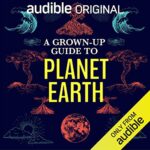 I listen to about half my books as audiobooks, and I stream them via the service called Audible. Unlike those, this 6-episode work is an Audible original, unavailable elsewhere (including in print). In it, the articulate English professor of geology Chris Jackson describes various aspects of our planet, weaving in “on the scene” audio from various places and interviews with other geologists. It’s very approachable, and I found it held my attention despite my already being familiar with most of the concepts being discussed. One strength of the initiative is Chris’s informality, and how inseparable that is from his enthusiasm. He’s chosen a great group of geoscientists to interview as part of the effort, including old friends like Kayla Iacovino as well as new voices I hadn’t previously known of. Each episode is tidily packaged, and you could listen to it on your morning commute or while you’re cooking dinner, blending in-studio narration with dialogue and on-the-scenes reporting. Lots of fun, and recommended for the geological newbies in your life.
I listen to about half my books as audiobooks, and I stream them via the service called Audible. Unlike those, this 6-episode work is an Audible original, unavailable elsewhere (including in print). In it, the articulate English professor of geology Chris Jackson describes various aspects of our planet, weaving in “on the scene” audio from various places and interviews with other geologists. It’s very approachable, and I found it held my attention despite my already being familiar with most of the concepts being discussed. One strength of the initiative is Chris’s informality, and how inseparable that is from his enthusiasm. He’s chosen a great group of geoscientists to interview as part of the effort, including old friends like Kayla Iacovino as well as new voices I hadn’t previously known of. Each episode is tidily packaged, and you could listen to it on your morning commute or while you’re cooking dinner, blending in-studio narration with dialogue and on-the-scenes reporting. Lots of fun, and recommended for the geological newbies in your life.
Horizon, by Barry Lopez
 Barry Lopez produced so many wonderful books over his career as one of America’s preeminent nature writers. He died late in the first year of the pandemic (of cancer rather than COVID). There are few other writers like Lopez, and I’ve found inspiration in his pages for decades. This volume was no exception – it’s a very strong collection of essays exploring wild places and humanity’s relationship to them, and to each other. Some feel very familiar – some are even places from which Lopez has previously reported, and in Horizon, he circles back and reexamines them from the perspective of being close to the end of his own time on Earth. Others are new and distinctive and in some cases totally shocking. One of Lopez’s great strengths is his interest in exploration, but one criticism I would offer of his writing is that he often dwells too long (for my taste) on historical exploration, on the machinations of white men long dead. Here, too, I feel his indulgences in the vagaries of James Cook’s life and work present a big stale biscuit wedged amid much richer fare derived from Lopez’s own lived experiences. But the strength of those personal essays are profound, and they resonate deeply with me. I’m sad this will be the last new work from Barry Lopez. May he rest in peace as his works endure and reach new audiences through the magic of reading.
Barry Lopez produced so many wonderful books over his career as one of America’s preeminent nature writers. He died late in the first year of the pandemic (of cancer rather than COVID). There are few other writers like Lopez, and I’ve found inspiration in his pages for decades. This volume was no exception – it’s a very strong collection of essays exploring wild places and humanity’s relationship to them, and to each other. Some feel very familiar – some are even places from which Lopez has previously reported, and in Horizon, he circles back and reexamines them from the perspective of being close to the end of his own time on Earth. Others are new and distinctive and in some cases totally shocking. One of Lopez’s great strengths is his interest in exploration, but one criticism I would offer of his writing is that he often dwells too long (for my taste) on historical exploration, on the machinations of white men long dead. Here, too, I feel his indulgences in the vagaries of James Cook’s life and work present a big stale biscuit wedged amid much richer fare derived from Lopez’s own lived experiences. But the strength of those personal essays are profound, and they resonate deeply with me. I’m sad this will be the last new work from Barry Lopez. May he rest in peace as his works endure and reach new audiences through the magic of reading.
Yellow Bird, by Sierra Crane Murdoch
 An interesting book, with two narrative centers. One is the fate of a man who disappeared (and was presumed murdered) while working in the oil shale boom in the Dakotas (the fracking frenzy that tapped the Bakken Formation). The second is the woman who obsessively sets out to solve the case, through tenacity and guile. Her name is Lissa Yellow Bird, a native of the Fort Berthold Indian Reservation, who has a checkered history, a fierce determination, and an instinct toward nurturing those she loves. Yellow Bird ultimately develops a tight friendship with the book’s author, reporter Sierra Crane Murdoch, which makes the book feel more personal and intriguing than it would have if Murdoch kept her own presence out of the narration. What results is a very intimate look at the lingering manifestations of U.S. colonialism on Native peoples, warped by boomtown economics and infused with the stink of petrochemicals. Greed and violence have been the essence with which U.S. policy has treated its indigenous peoples, and this book manages to explore that idea both in the grand sweep of history and the microcosm of this one particular woman, solving a murder in her own idiosyncratic way. A dramatic story, evocatively told.
An interesting book, with two narrative centers. One is the fate of a man who disappeared (and was presumed murdered) while working in the oil shale boom in the Dakotas (the fracking frenzy that tapped the Bakken Formation). The second is the woman who obsessively sets out to solve the case, through tenacity and guile. Her name is Lissa Yellow Bird, a native of the Fort Berthold Indian Reservation, who has a checkered history, a fierce determination, and an instinct toward nurturing those she loves. Yellow Bird ultimately develops a tight friendship with the book’s author, reporter Sierra Crane Murdoch, which makes the book feel more personal and intriguing than it would have if Murdoch kept her own presence out of the narration. What results is a very intimate look at the lingering manifestations of U.S. colonialism on Native peoples, warped by boomtown economics and infused with the stink of petrochemicals. Greed and violence have been the essence with which U.S. policy has treated its indigenous peoples, and this book manages to explore that idea both in the grand sweep of history and the microcosm of this one particular woman, solving a murder in her own idiosyncratic way. A dramatic story, evocatively told.
The Story of the Earth in 25 Rocks: Tales of Important Geological Puzzles and the People Who Solved Them, by Donald R. Prothero
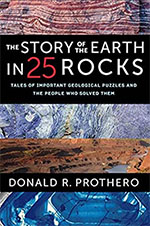 A very clever idea for a book – 25 neat and tidy chapters exploring Earth history and process by looking at specific rock types. Prothero is an old hand at writing, and has churned out a workmanlike book as a result. It could have stood another round of editing, I think, but is still a serviceable volume documenting the importance of rocks like komatiites, lunar anorthosite, blueschist, turbidites, or the outcrop at Siccar Point. I could see assigning some of these chapters (~10 pages or so) to students in Historical Geology as prompts to their thinking about how to solve geological enigmas through collaboration, logic, and multiple datasets. As a professional geologist, I am not sure that any of the rocks detailed in the book were surprises for me, but Prothero has a great strength in really caring about the arc of scientific thinking, and who wrote what, when. So I definitely gained a fuller appreciation of the backstory behind the interpretation of some rocks as a result of “reading*” it. (I actually listened to it on Audible, and I must say that this was one of the worst audiobook renditions I’ve heard, as the narrator consistently mispronounced almost every bit of geoscientific jargon – very grating on the eardrums. Read it on paper instead, would be my advice.)
A very clever idea for a book – 25 neat and tidy chapters exploring Earth history and process by looking at specific rock types. Prothero is an old hand at writing, and has churned out a workmanlike book as a result. It could have stood another round of editing, I think, but is still a serviceable volume documenting the importance of rocks like komatiites, lunar anorthosite, blueschist, turbidites, or the outcrop at Siccar Point. I could see assigning some of these chapters (~10 pages or so) to students in Historical Geology as prompts to their thinking about how to solve geological enigmas through collaboration, logic, and multiple datasets. As a professional geologist, I am not sure that any of the rocks detailed in the book were surprises for me, but Prothero has a great strength in really caring about the arc of scientific thinking, and who wrote what, when. So I definitely gained a fuller appreciation of the backstory behind the interpretation of some rocks as a result of “reading*” it. (I actually listened to it on Audible, and I must say that this was one of the worst audiobook renditions I’ve heard, as the narrator consistently mispronounced almost every bit of geoscientific jargon – very grating on the eardrums. Read it on paper instead, would be my advice.)
The Ministry for the Future, by Kim Stanley Robinson
 A novel about humanity’s future living as a society on a warming planet. The first chapter is among the most harrowing things I’ve read, in fiction or in reality. I won’t reveal any spoilers here for that entry point, but I will encourage you to read it. The short version is that climate change is bad, and people get hurt. From there, different characters take on tasks of healing the world, grappling with the complexity of climate, glacier dynamics, transnational politics, economic incentives, and messiness of interpersonal relationships. I will now spoil the novel’s main point, which is that (at least in this fictional universe), humanity solves climate change and nurtures into existence a world order that is sustainable. Along the way, various insights are achieved and various machinations developed, some of them clearly ethical, others dramatically less so. To read something hopeful about climate change is a nice change of pace, and I found myself engaged throughout the novel, with the possible exception on a deep dive into the economics of a particular approach to decarbonization.
A novel about humanity’s future living as a society on a warming planet. The first chapter is among the most harrowing things I’ve read, in fiction or in reality. I won’t reveal any spoilers here for that entry point, but I will encourage you to read it. The short version is that climate change is bad, and people get hurt. From there, different characters take on tasks of healing the world, grappling with the complexity of climate, glacier dynamics, transnational politics, economic incentives, and messiness of interpersonal relationships. I will now spoil the novel’s main point, which is that (at least in this fictional universe), humanity solves climate change and nurtures into existence a world order that is sustainable. Along the way, various insights are achieved and various machinations developed, some of them clearly ethical, others dramatically less so. To read something hopeful about climate change is a nice change of pace, and I found myself engaged throughout the novel, with the possible exception on a deep dive into the economics of a particular approach to decarbonization.
The Calculating Stars, by Mary Robinette Kowal
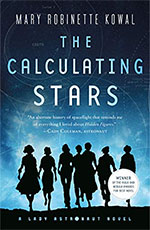 A novel, the first in a series, that tracks the development of the U.S. space program in an alternate reality wherein a massive meteor strikes the Mid-Atlantic in the aftermath of World War II, wiping out D.C. and triggering unstoppable global warming. The U.S. government relocates to Kansas and kick-starts an aggressive Moon/Mars colonization effort in the 1950s, racing against time to save humanity by getting off the planet. The novel is narrated by a “computer” (in the Hidden Figures sense of the word) and former pilot, Elma York. Elma is married to an engineer, and after an exciting and harrowing first chapter wherein they survive the meteorite strike, the Drs. York move to Kansas and become integral to the space program. Elma ends up leading a diverse group of women pilots and computers to initiate a female astronaut program. It’s sort of interesting to be immersed in 1950s sexism and racism amid the struggles of the space race. Attention is also given to shaming characters for their mental health and use of corrective medication. Real-life figures like Werner von Braun and Mr. Wizard are woven into the narrative that is principally made up of fictional characters. An additional dash of distinctive flavor comes from the Yorks being Jewish, and a fair amount of attention being devoted to their practice. My chief complaint is that the wink-wink, nudge-nudge sex scenes between the Yorks are described in language I can only describe as cringe-inducing. There are many of them, and author Kowal seems to pride herself in masterful innuendo that in fact comes off as pretty childish. My second complaint is that there are really no big plot twists after the discovering of the climate-altering effects of the impact. The narrative just goes forward, documenting the journey of this fictional first woman into space.
A novel, the first in a series, that tracks the development of the U.S. space program in an alternate reality wherein a massive meteor strikes the Mid-Atlantic in the aftermath of World War II, wiping out D.C. and triggering unstoppable global warming. The U.S. government relocates to Kansas and kick-starts an aggressive Moon/Mars colonization effort in the 1950s, racing against time to save humanity by getting off the planet. The novel is narrated by a “computer” (in the Hidden Figures sense of the word) and former pilot, Elma York. Elma is married to an engineer, and after an exciting and harrowing first chapter wherein they survive the meteorite strike, the Drs. York move to Kansas and become integral to the space program. Elma ends up leading a diverse group of women pilots and computers to initiate a female astronaut program. It’s sort of interesting to be immersed in 1950s sexism and racism amid the struggles of the space race. Attention is also given to shaming characters for their mental health and use of corrective medication. Real-life figures like Werner von Braun and Mr. Wizard are woven into the narrative that is principally made up of fictional characters. An additional dash of distinctive flavor comes from the Yorks being Jewish, and a fair amount of attention being devoted to their practice. My chief complaint is that the wink-wink, nudge-nudge sex scenes between the Yorks are described in language I can only describe as cringe-inducing. There are many of them, and author Kowal seems to pride herself in masterful innuendo that in fact comes off as pretty childish. My second complaint is that there are really no big plot twists after the discovering of the climate-altering effects of the impact. The narrative just goes forward, documenting the journey of this fictional first woman into space.
Origin: A Genetic History of the Americas, by Jennifer Raff
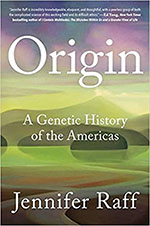 An important contribution to understanding the peopling of the Americas, blending archaeology and genetic sequencing. This important new line of data is critical for evaluating the various hypotheses of when and from where Native Americans arrived on these continents. The author, Jennifer Raff, currently the President of the American Association of Anthropological Genetics, describes her own work in an “ancient DNA lab,” extracting, amplifying, and evaluating genetic information from human remains recovered from archaeological sites, but also recounts DNA results from living Native Americans. This she attempts to tie together with the vast suite of archaeological insights, with all their attendant details of place, dating techniques, and associated technologies. The result is a complicated tangle of genetic markers, site names, tribal affiliations, and competing hypotheses. I think the book would be most valuable for a reader who has already mastered the nuances of American archaeology, but for me (being new to the details of places like Meadowcroft, tools like Clovis points, and ideas like the Kelp Highway, it was a lot to keep track of, especially once the alphanumerical naming jargon of various genetic markers started being introduced. Still, to have it all in one volume seems to me to be a very valuable manifestation, and I’m grateful Dr. Raff has orchestrated all this information into a single book. The other major thing I think she deserves recognition for is an unceasing and unrelenting emphasis on ethics in anthropology. The book repeatedly details colonial and racist attitudes and actions of anthropologists both past and present, and demonstrates a better way forward, integrating scholarly research with the modern needs and interests of living Native Americans. Conversation and consent must take place prior to any investigation. Raff puts her respect for the indigenous perspective front and center, and doesn’t let the reader forget that the insights she shares were developed through cooperation with the descendants of the people she studies.
An important contribution to understanding the peopling of the Americas, blending archaeology and genetic sequencing. This important new line of data is critical for evaluating the various hypotheses of when and from where Native Americans arrived on these continents. The author, Jennifer Raff, currently the President of the American Association of Anthropological Genetics, describes her own work in an “ancient DNA lab,” extracting, amplifying, and evaluating genetic information from human remains recovered from archaeological sites, but also recounts DNA results from living Native Americans. This she attempts to tie together with the vast suite of archaeological insights, with all their attendant details of place, dating techniques, and associated technologies. The result is a complicated tangle of genetic markers, site names, tribal affiliations, and competing hypotheses. I think the book would be most valuable for a reader who has already mastered the nuances of American archaeology, but for me (being new to the details of places like Meadowcroft, tools like Clovis points, and ideas like the Kelp Highway, it was a lot to keep track of, especially once the alphanumerical naming jargon of various genetic markers started being introduced. Still, to have it all in one volume seems to me to be a very valuable manifestation, and I’m grateful Dr. Raff has orchestrated all this information into a single book. The other major thing I think she deserves recognition for is an unceasing and unrelenting emphasis on ethics in anthropology. The book repeatedly details colonial and racist attitudes and actions of anthropologists both past and present, and demonstrates a better way forward, integrating scholarly research with the modern needs and interests of living Native Americans. Conversation and consent must take place prior to any investigation. Raff puts her respect for the indigenous perspective front and center, and doesn’t let the reader forget that the insights she shares were developed through cooperation with the descendants of the people she studies.
Rosewater, by Tade Thompson
 A science fiction novel, the first in a series. The basic set-up is that an alien organism has installed itself in a big way in Nigeria, sharing both healing powers and mind-reading ability with the humans with whom it comes into contact. A town grows up surrounding this great dome-like extraterrestrial presence; the doughnut-shaped titular Rosewater. Living in Rosewater is the protagonist of the novel: Kaaro. He is a “sensitive,” one of the mind-reading types. The novel is structured around his evolution across two timelines: “then” and “now,” so you as the reader both get his backstory and the urgent current crisis as he navigates trauma, government bureaucracy, romance, treachery, and just plain weirdness. These “then” and “now” chapters alternate, and so sometimes its confusing (at least to me) which moment I’m immersed in, but ultimately the past informs the present in well-apportioned chunks of narrative arc. It’s very well-written and full of evocative detail. I’ll be reading the sequel next.
A science fiction novel, the first in a series. The basic set-up is that an alien organism has installed itself in a big way in Nigeria, sharing both healing powers and mind-reading ability with the humans with whom it comes into contact. A town grows up surrounding this great dome-like extraterrestrial presence; the doughnut-shaped titular Rosewater. Living in Rosewater is the protagonist of the novel: Kaaro. He is a “sensitive,” one of the mind-reading types. The novel is structured around his evolution across two timelines: “then” and “now,” so you as the reader both get his backstory and the urgent current crisis as he navigates trauma, government bureaucracy, romance, treachery, and just plain weirdness. These “then” and “now” chapters alternate, and so sometimes its confusing (at least to me) which moment I’m immersed in, but ultimately the past informs the present in well-apportioned chunks of narrative arc. It’s very well-written and full of evocative detail. I’ll be reading the sequel next.

